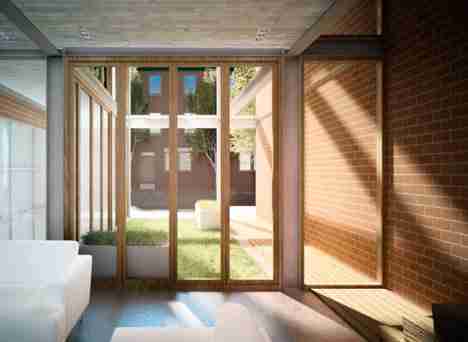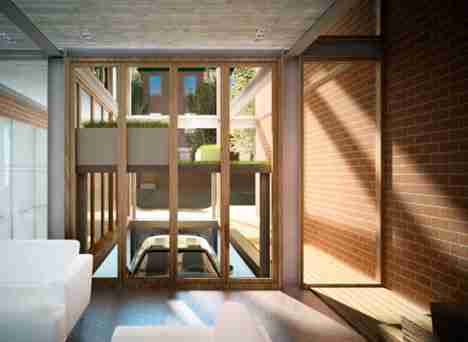Closely located to the Moscow International Business Center (MIBC), the largest investment and construction project in Russia, and Europe as a whole, the Expocenter Project offers the city a new exposition venue, hotel, and residential development. The main function of the horizontal space is to house the exposition and conference halls. The exposition halls cantilever to the sides at the upper levels, providing for a snow-free outdoor event space; and concealing the traffic at the southern part of the building. Such a venue with 26,340 sqm net exhibition space, which is located in the center of Moscow, will be in high demand for such high-class exhibitions and events. The conference halls, located at the Eastern side of the first floor horizontal space, accommodate 3 auditoriums of different sizes, which can also combine to create one large hall of 1500 seats. The residential tower is designed as an elegant continuation of the Moscow City skyline (first a drop and then a rise), with a large vertical volume divided into two smaller shapes in order to sustain its overall slenderness.This verticality of the urban space swoops to the ground to create a main lobby that serves both as a grand social meeting space, and allows for separate entrances for the residence blocks and the hotel. The hotel rises to the 26th floor of the Western tower, with beautiful views to the Moscow City development. The 2nd and 3rd floors of the hotel complex contain a gym, a spa, and many specialized restaurants, bistro cafes and shops. The residences are located in the Eastern tower and on the top floors of the Western tower.
Architect: Zaha Hadid
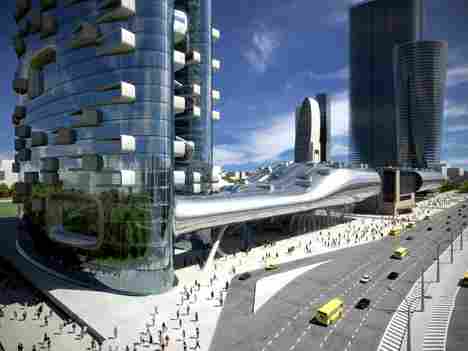
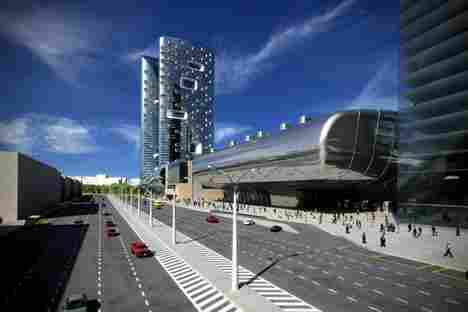
These triangular tiny homes with glazed, sweeping windows pay homage to the Iceland’s viking history
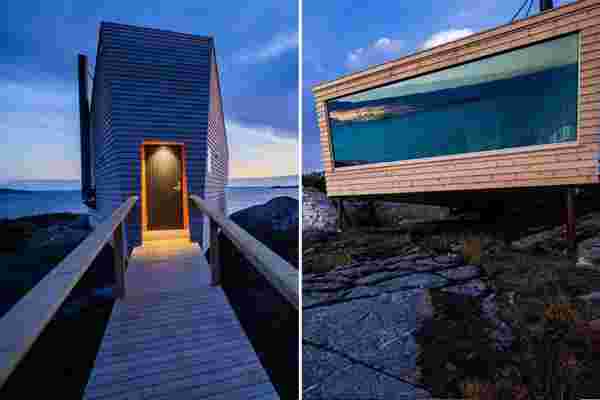
In 868, Floke Vilgerdsson went sailing from Norway to find what we presently call Iceland, along with his grandfather, three daughters, mother, and wife. Today, in honor of Vilgerdsson’s expedition, a trail of five timber cabins called Flokehyttene, designed by Holon Arkitektur, punctuate Norway’s coastline, offering panoramic views of the gusty North Sea and the 19th-century Ryvarden lighthouse.
Careful not to disrupt the landscape of Sveio, the five cabins were gently integrated into the rocky, seaside mass of land by drilling four holes for all the corners of each cabin where steel columns anchor the structures in place, providing guests with an up, close, and personal experience with the changing waters of North Sea. Four of the five cabins offer accommodations for five guests and the larger fifth cabin, named after Floke’s grandfather, Horda-Kåre, can sleep up to ten people and is also wheelchair accessible. The other four cabins are named after his mother Vilgjerd, daughters Geirhild and Tjogerd, and Faxe who joined Floke on his journey to the island. The sweeping, glass windows practically kiss the North Sea and make the cabins feel endlessly spacious. Inside the cabins, guests can expect plenty of sleeping arrangements, including beds in the upstairs bedroom and loft, a sofa downstairs, and cushioned benches just beneath the angled windows. In addition to all of the different sleeping arrangements, guests can enjoy getting toasty by the fireplace alongside the sea’s breeze and open water. Each cabin is also outfitted with a toilet and full-sized kitchen for visitors to enjoy and utilize at their convenience, all you’ll need are your favorite dishes to cook.
Each cabin dons a triangular shape, which provides them with the strength and flat cut to endure sharp winds and intense climate changes that are somewhat usual for the Western Norwegian coast. The shape also adds a sense of mystery to the design – from the front, only a narrow exterior can be seen which belies itself in size once you step inside it. It’s an architectural design that would almost seem like magic! Commissioned by Haugesund Tourist Association, the designers at Holon Arkitektur were able to design and construct these windswept, unwavering cabins in honor of the Vikings from time past and Norway’s long history of endurance and natural beauty.
Designer: Holon Arkitektur
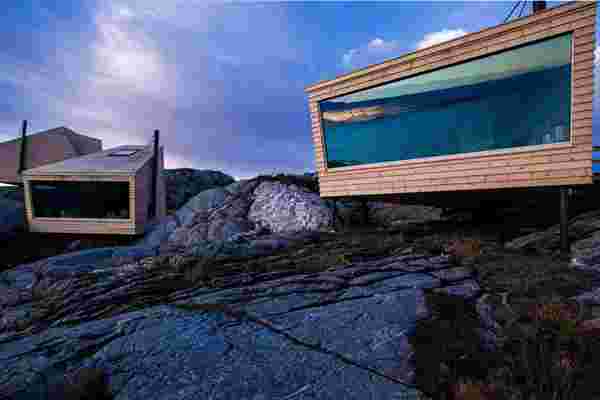
My Entire House be Rearranging Itself, Grid-wise
I just saw an episode of Futurama where instead of the elevator moving though the building, the entire building moved when the button was pressed. This is the SAME THING – except the screaming is for joy, not terror. Let us together usher in this new age of change with the Grid House.
Living smooth in my Grid House, sitting on my [Ti.Galet] , growing my [Sound Garden] , hearing some [YO, wireless music] , typing on my [World’s Largest Mouse] , lol, posting concepts on Yanko.
Designer: Moto Design Shop
